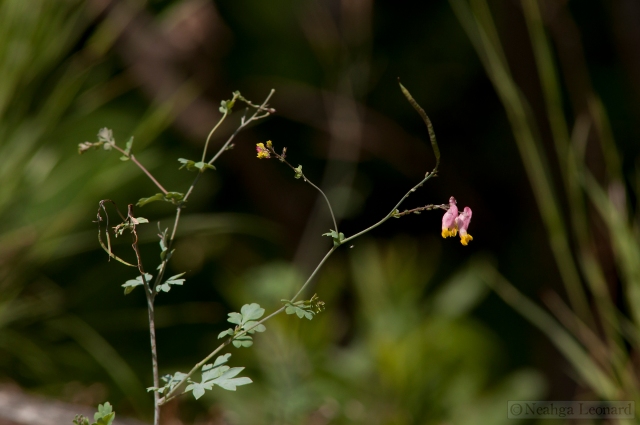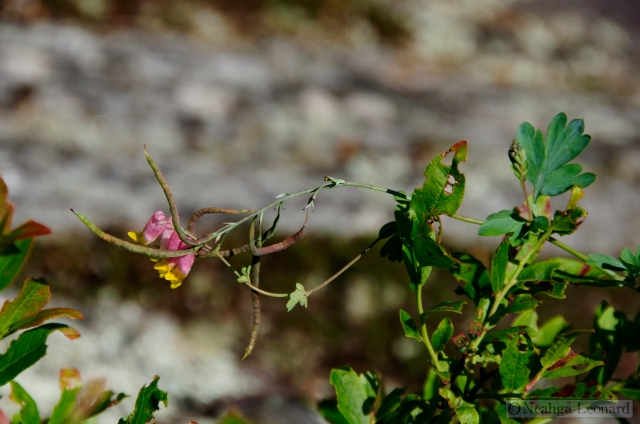My work here in Vermont is drawing to a close and the time is coming to make a transition. Serendipitously, this is synchronized with one of the more dramatic and beautiful changes that takes place in New England. Fall Color, the time when the trees reveal their hidden secrets for a brief time before dropping their leaves in expectation of a prolonged period of time when photosynthesis is impractical.
The color is easy to capture at the level of an individual leaf, but surprisingly difficult to capture at a landscape level. The problem is, like so many things, one of chemistry and individuality. Not only does each species of tree respond differently to the seasonal changes, each individual tree responds differently, indeed each individual leaf responds differently. The soil and the weather over the past year have their own influences as well. This time of year Vermont makes quite a bit of money from tourists, “leaf peepers” they’re called locally. As with anything that generates money there are numerous conflicting opinions as to what the best conditions are for a good fall color. The conversations have the flavor of farmers talking about the weather or arguing over the best shape for the bottom of a fence post.
There are several aspects of fall color I find particular interesting. The first is that some of the color you see is always there, it is just hidden from view within the leaf by the photosynthesizing portions for much of the year. I mentioned chemistry. This is not because I am a chemist, or even particularly knowledgeable about chemistry, but because it is important for understanding much of the world around us. Chemistry and physics.
Sunlight comes in all colors and some colors (wavelengths) carry more energy than others. A plant needs to harvest that energy to produce sugars for growth and metabolism. One of the difficulties the plant experiences is that energy comes in discrete packages, called quantum (quanta plural), and cannot be divided. I realize that at this point some people will bring up the wave/particle duality issue; very loosely speaking color can be though of as wavelength and quantum can be thought of as the energy each particle carries.
In any event, plants store energy by breaking phosphorous bonds and recombining the atoms in new combinations, especially as ATP. ATP, adenosine triphosphate, is the battery plants run upon. Breaking apart molecular bonds takes a specific amount of energy and phosphorous is a particularly energy intensive fuel to use. This also means that it can store a lot of energy, hence the plant’s use of it. The degradation of ATP to ADP releases some of that stored energy and powers the plant. The tricky part is that the light energy the plant has available to it, in the form of discrete quantum packets, does not line up exactly with the energy required to break apart and recombine phosphorus. And, as previously mentioned, this process takes a lot of energy.
Remember, wavelength is color. Shorter wavelengths carry more energy, quanta, and longer wavelengths carry less energy (incidentally, measuring this is one of the ways we tell if a star is moving towards or away from us). Think of a rainbow for a minute…
The red light is low energy, the blue light high energy. Evolution is generally smart and not wasteful, within the limits of the resources it has to work with. The phosphorous bonds cannot be broken down directly, the plant must convert CO2 and H2O into glucose sugars, metabolize those, and use that energy to create ATP. All this costs energy, and plants harvest it all from the sun, using much of the red and blue light, and most of the rest of the spectrum except for green (with a few exceptions – purple leaved plants for example use green light). Blue light causes something of a problem, it is extremely high energy, more than the plant can actually use in most cases. Excess energy becomes heat, fine if you are in a cold climate, but the bane of existence if you are already in a hot climate. Too much heat and plants close their stomata to avoid water loss, this also limits the plant’s ability to metabolize or photosynthesize. One idea of why plants reflect the green light, also high energy, is to avoid overheating. Green leaves may be a safety mechanism.
Glucose, the initial fuel and energy storage system of the plant, is a relatively relatively simple sugar and sweet to our taste buds. During fall the plant pulls the important and complex chlorophyll compounds back into the main body, abandoning the leaf, sealing it off with brittle cork-like cells so that the leaf dies and drops away. As the green chlorophyll leaves carotenoids in the leaves reveal some of the previously obscured color, but something else happens as well. The glucose remaining in the leaf suffers damage from the sunlight and chemically changes, becoming anthocyanins. The colors of anthocyanins are influenced by a complex host of factors, but the end result is that they produce fall color.
The second thing I find fascinating about fall color is due to the complexity of factors influencing anthocyanin production and the resultant colors. Below is an ugly selection of the first Mt Elmore photo I’ve extracted and over-saturated to demonstrate this second interesting aspect of fall.
The distribution and pattern of colors reveal soil types and moisture content. Notice how the colors are not randomly distributed, there are definite bands and patterns? Color hits first and most intensively where there is some sort of environmental stress. The two micro-habitats I see changing color first in Vermont are wetlands and well-drained, dry soils. The upper band of color, below the rock outcrop, is on a slight ledge with extremely shallow soil, land that stays dry and goes through more moisture fluctuations than the land surrounding it. Each of those patches of color tells you something about the environmental conditions of that area, both seasonally and geologically.
This, to me, is fascinating, it is as though for a short time I have been granted superpowers and have Landsat-like multi-spectral vision.
This time of year in new England is magical. The nights are cool and the days can be warm, fog rises and the colors are bright. In the right place mornings feel like something from a fantasy novel, mysterious and beautiful, a place where knights, dragons, elves, or gods might be just around a corner.
As the seasons change so does my future. I have accepted a position in Borneo and will be learning a whole new ecology, a new cycle of seasons, and a new set of environmental cues to pick-up on. As I make the transition my posts may be a bit rocky and infrequent, and, once at my post, I will be relying on a patchy satellite up-link for a few years, but please bear with me. Borneo is a rapidly changing place not many people have the opportunity to spend any time in and I intend to share the experience with those who are interested.



















































